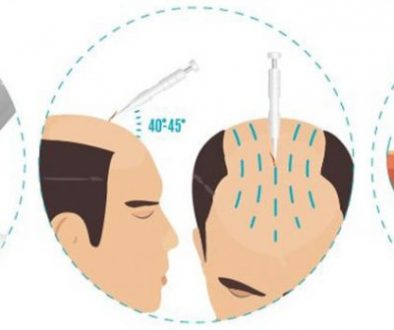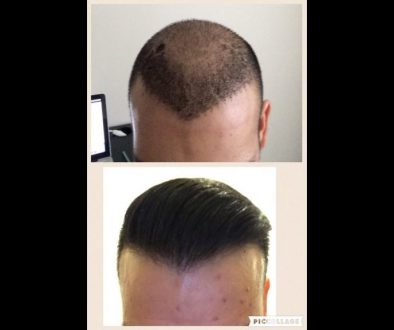New Study Links Male Pattern Hair Loss (Androgenic Alopecia) to Prostate Cancer
 In a new study, conducted by the American Society of Clinical Oncology, researchers found a correlation between a specific [tag]balding[/tag] pattern seen in [tag]androgenic alopecia[/tag] ([tag]male pattern hair loss[/tag]) and an aggressive form of prostate cancer.
In a new study, conducted by the American Society of Clinical Oncology, researchers found a correlation between a specific [tag]balding[/tag] pattern seen in [tag]androgenic alopecia[/tag] ([tag]male pattern hair loss[/tag]) and an aggressive form of prostate cancer.
The study, titled the [tag]Prospective Prostate, Lung, Colorectal, and Ovarian (PLCO) Screening Trial[/tag], confirmed a well established theory that [tag]prostate cancer[/tag] and [tag]male pattern baldness[/tag] are linked by a shared hormonal imbalance. Both prostate cancer and androgenic alopecia feature an irregularity of androgen-based hormones like testosterone and, more specifically, dihydrotestosterone ([tag]DHT[/tag]). This study, however, went a step further and linked one specific balding pattern seen in androgenic alopecia to an aggressive type of prostate cancer. According to the results, men who, by age 45, suffer from “baldness in the frontal scalp and moderate hair thinning in the crown” have a 40% increased risk of developing aggressive prostate cancer.
 Androgenic alopecia is a progressive and unpredictable type of hair loss. Due to it’s ongoing nature, the degree of hair loss seen in androgenic alopecia is classified by the Hamilton-Norwood Hair Loss Scale. This scale grades hair loss on a level from II – VII, with II being the least amount of recession and VII being the most severe. Based upon the description in the article, the level of hair loss associated with the aggressive prostate cancer is approximately a Norwood level IV.
Androgenic alopecia is a progressive and unpredictable type of hair loss. Due to it’s ongoing nature, the degree of hair loss seen in androgenic alopecia is classified by the Hamilton-Norwood Hair Loss Scale. This scale grades hair loss on a level from II – VII, with II being the least amount of recession and VII being the most severe. Based upon the description in the article, the level of hair loss associated with the aggressive prostate cancer is approximately a Norwood level IV.
In the study, 39,070 men aged 55-74 were asked to self-identify their level of hair loss – using a pictorial version of the Norwood scale – at age 45. Over 1,138 cases of prostate cancer were identified in this patient population. Furthermore, 51% of these prostate cancer cases were classified as “aggressive.” The researchers further evaluated the data and found that men with a Norwood level IV balding pattern at 45 years of age were 40% more likely to suffer from aggressive prostate cancer.
The study, while making this startling connection, does go on to state that these findings are very new and should not yet be applied to patient care. This means physicians should not start screening patients for prostate cancer based upon their perceived level of hair loss or Norwood classification; nor should patients with Norwood IV balding patterns panic. It is, however, useful information and may lead to better detection and screening of hormone-driven prostate cancer in the future.
__________
Blake Bloxham – formerly “Future_HT_Doc”
Editorial Assistant and Forum Co-Moderator for the Hair Transplant Network, the Hair Loss Learning
Center, the Hair Loss Q&A Blog, and the Hair Restoration Forum
Follow our community on Twitter
Watch hair transplant videos on YouTube



